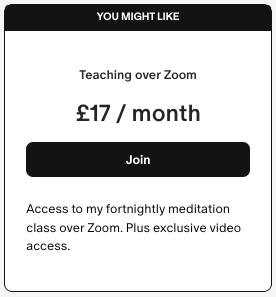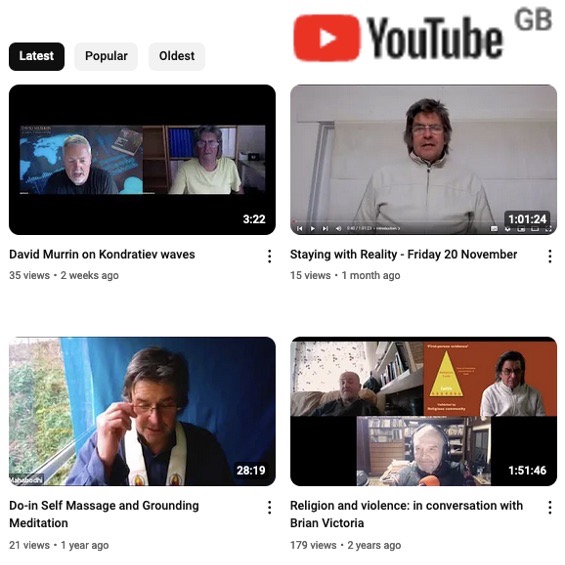Guilt
Below is an excerpt from my forthcoming book… © Mahabodhi Burton 15 minute read This excerpt is from the chapter ‘Woke As Old Testament Religion’ and goes into guilt in all its forms, including Buddhism’s view of where guilt is helpful and where it is not. An accelerating trend in taking offense In 2008, Christian Lander joked in Stuff White People Like that being offended was something a certain brand of white people enjoyed, alongside attending film festivals and wearing vintage T-shirts. Today, such a person hearing that joke would likely: ‘launch into a hissing tirade about how there is nothing funny about people trying to dismantle the prevalence of white supremacy and all whites’ “complicitness” in it. If he were to write that book today, Lander would be unlikely to include that joke, which is an indication of the extent to which there is something in the air that we hadn’t seen until quite recently.’[1] A critical mass of white liberals no longer quietly pride themselves in knowing they need to be offended about certain things, ‘but now see it as a duty to excoriate and shun those (including black people) who don’t share their degree of offense. To some, all of that may sound like mere matters of manner and texture.’[2] Third Wave Antiracism, McWhorter claims, harms black people in the name of its guiding impulses: in insisting that it is racism when black boys are overrepresented among those suspended or expelled from schools for violence, ceasing to suspend or expel perpetrators only leading to violence persisting and a declining skillset among the young black population, which white liberals are complicit in. The high priests of Woke today: Joel Kotkin’s Clerisy (See Chapter 3) tell us just how we should speak and think. Religion, McWhorter contends, has no place in the classroom or elite university, nor in our codes of ethics, nor in delineating how all members of society are to express themselves, and ‘almost all of us spontaneously understand that and see any misunderstanding of the premise as backward.’[3] ‘Yet, since about 2015, a peculiar contingent is slowly headlocking us into making an exception, supposing that this particular new religion is so incontestably correct, so gorgeously surpassing millennia of brilliant philosophers’ attempts to identify the ultimate morality, that we can only bow down in humble acquiescence.’[4] The liberal middle-classes are often fully unaware of just what they are doing: ‘Question these people for real and they howl as if having a finger pulled backward. But it isn’t that they don’t want their power taken away: The Elect see themselves as speaking truth to power, not as occupying it....
The Twitter Files
Below is an excerpt from my forthcoming book… © Mahabodhi Burton 30 minute read This excerpt is from the Preface and goes into political developments over the last 15 months, since Elon Musk bought Twitter (now ‘X’) and invited independent journalists such as Bari Weiss, Matt Taibbi and Michael Shellenberger to share what they found there. Included is a section on the Trusted News Initiative, a global media monopoly instigated by large legacy media outlets such as the BBC. As a religious minister working within a western Buddhist tradition[1] and thus committed to the Buddha’s non-partisan teaching of the Middle Way, I find myself in a strange situation. We do indeed live in ‘interesting times.’ The Western world is enmeshed in the Culture Wars, seemingly chasing its tail/ fighting itself over ideology when under the surface essential resources are dwindling in a declining empire, causing people to fear for their future and that of their children and grandchildren. The world we inhabit is increasingly one in which people live their lives in information silos: only hearing the message designed to justify power to their particular group, and otherwise blithely getting on with life, oblivious to what is going on elsewhere. Scientia potentia est: ‘Knowledge is power’ as Francis Bacon said in 1597. Little did he know that this would play out by said knowledge acting as a reason for people to isolate themselves in their self-sustaining silos, fearing and balking from encounters with people holding different viewpoints. If a news source from across the cultural divide is encountered, it is typically regarded with suspicion and mistrust, even though it may be the only source of an alternative viewpoint. People obey the group’s social mores: adopting its lifestyle choices and assumptions in line with the others on their radar, which often remain unchallenged, whilst in the silo on the other side of the political spectrum, the exact same thing is happening. God forbid anyone should attempt to occupy a middle ground or offer a balanced opinion. Ricky Gervais: ‘Social media amplifies everything. If you’re mildly left-wing on Twitter you’re suddenly Trotsky. If you’re mildly conservative you’re Hitler, and if you’re centrist and you look at both arguments, you’re a coward and they both hate you.’[2] The two silos, as of 2022, consist of a) left-wing mainstream ‘The Trusted News Initiative (TNI), a self-described “industry partnership” launched by several of the world’s largest news outlets—including the BBC, The Associated Press (AP), Reuters, The Washington Post, Google, Microsoft, Facebook, and Twitter—in March of 2020.’[3] and b) conservative social media a more conservative-leaning silo/ camp that consists of independent YouTube content creators—a high...
Views
Below is an excerpt from my forthcoming book… 10 minute read This excerpt is from Chapter 8, ‘Mindfulness the Undiscovered Foundations,’ in which I explore the Four Foundations of Mindfulness (Pali: satipatthanas,) and here, ‘Mindfulness of Mental Objects (Pali: dhammas.) I am particularly concerned to clarify this key section of the Satipatthana Sutta: current interpretations of ‘mental objects’ and ‘dhammas‘ have lacked conviction amongst commentators. Views I have arrived at ‘Views’ as my translation of dhammas, and this is how. Dhamma roughly is ‘what can be remembered’ or ‘what can be borne in mind’ (Pali: dharetabba), hence the translation of dhammas as ‘mental objects’ and sometimes as ‘phenomena.’[1] ‘Mental objects’ doesn’t tell us very much about what dhammas are, although two things we do hold in the mind are ‘concepts’ and ‘images.’ Buddhism teaches that we have not just five but six senses, with the mind being the sixth sense called manas. As humans we have evolved to make assessments about the world around us. These assessments can be at the level of thought, although prior to thought, evolution taught us the more gut-level instinctual response of fight or flight, where information resides at the visceral level on a ground of learned experience. According to Sagaramati, a view is a deeply ingrained attitude, not simply an opinion; it arises on one or all of Buddhism’s grounds for faith: reason, intuition and experience. When we come across something that meets one of these criterion as a means either for survival, to avoid pain, or to bring joy and fulfilment, we don’t need to consciously make an effort to place that ‘mental object’ in our mind, it naturally gets stored there. In this way views naturally arise based upon a mix of feelings, gut instincts, and reasons; in fact, often it is emotion that plays the bigger role, only for us to later come up with rationalizations for the views we hold. The process of bearing a mental object in mind, i.e. in the mind-sense manas[2] (Pali,) involves apperception or recognition (Sanskrit: samjna; Pali: sanna.) Through life we are taught the conventional conceptual meanings of concrete objects and abstract concepts: chair, desk, popularity. Once we know these as names, we can recognize them when we see them. But we also recognize images: a person’s face, a landscape, a painting, a visualized Buddha. ‘Although when manas is translated as ‘mind’ dhammas tends to be rendered accordingly as ‘thoughts’ or ‘ideas’, note that dhammas qua the object of manas as the sixth sense faculty refer not only to thoughts, ideas or concepts, but to mentality in its broadest denotation:...







 Users Today : 234
Users Today : 234 Users Yesterday : 110
Users Yesterday : 110 This Month : 874
This Month : 874 Total Users : 16031
Total Users : 16031
